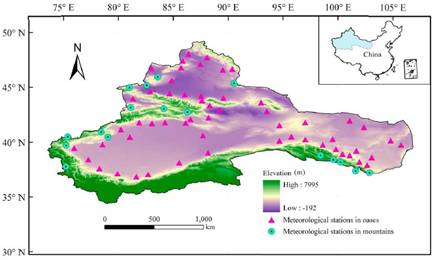Why does the Temperature Rise Faster in the Arid Region of Northwest China?
2012-09-20
A significant role of humans in altering the climate system has become a generally accepted fact and an arising environmental challenge in recent years, supported by both observations and global climate modeling studies. However, applying global scale simulation results to interpreting and predicting regional situations is challenging and in fact, its applicability is questionable. Recent research reveals that regional climate change may considerably deviate from the trends at the national and/or global scales. As a particular case, the air temperature in the arid region of northwest China has been increasing by a rate of 0.33–0.39ºC/decade in the past 50 years, considerably higher than the overall rate of China (0.25ºC/decade) and that of the entire globe (0.13ºC/decade) for the same period. So, in this paper, researchers intended to identify the direct cause for this regional deviation.
In this study, the arid region of northwest China refers to the vast area generally defined by N30°–N50° and E70°–E110°. The total area of the region is about 2.5 million km2, accounting for over 1/4 of China. Researchers used the monthly and annual temperature for the period of 1960–2010 from 74 stations in the study area to characterize the temperature variation during this period.
The result showed that among the four seasons the temperature change of winter has been playing the most important role in the yearly change in this region. They also found that the winter temperature in this region has a strong association with the Siberian High (correlation coefficient: R=-0.715) and the greenhouse gas emission (R=0.51), and between the two the former is stronger. They thus suggest that the weakening of the Siberian High during the 1980s to 1990s on top of the steady increasing of the greenhouse emission is the main reason for the higher rate of the temperature rise in the arid region of the northwest China.
The result has been published on Journal of Geophysical Research, 2012. doi:10.1029/2012JD017953. The paper can be downloaded from http://www.agu.org/pubs/crossref/2012/2012JD017953.shtml.

Study area and the meteorological stations. (Image by XIEG)



